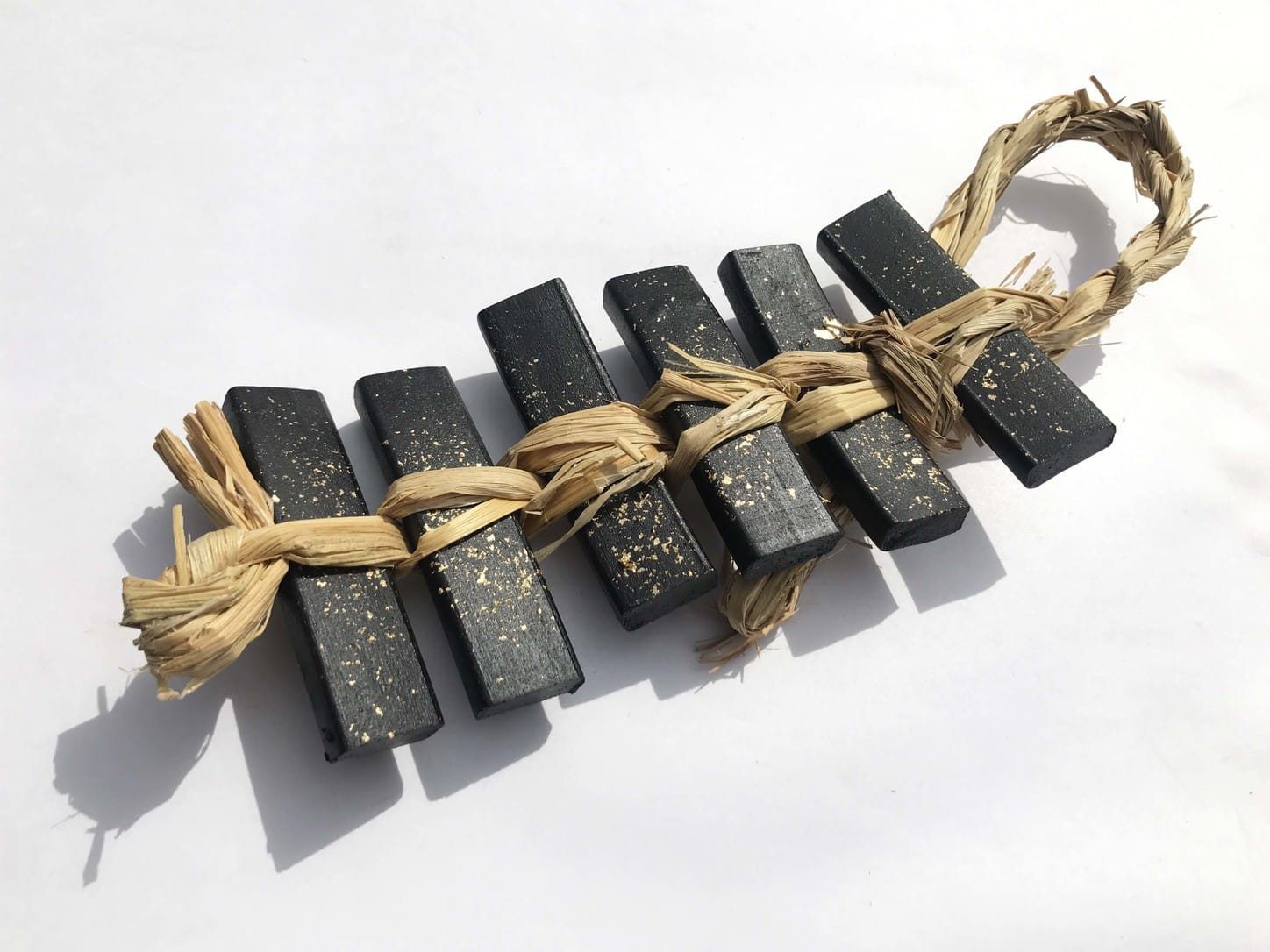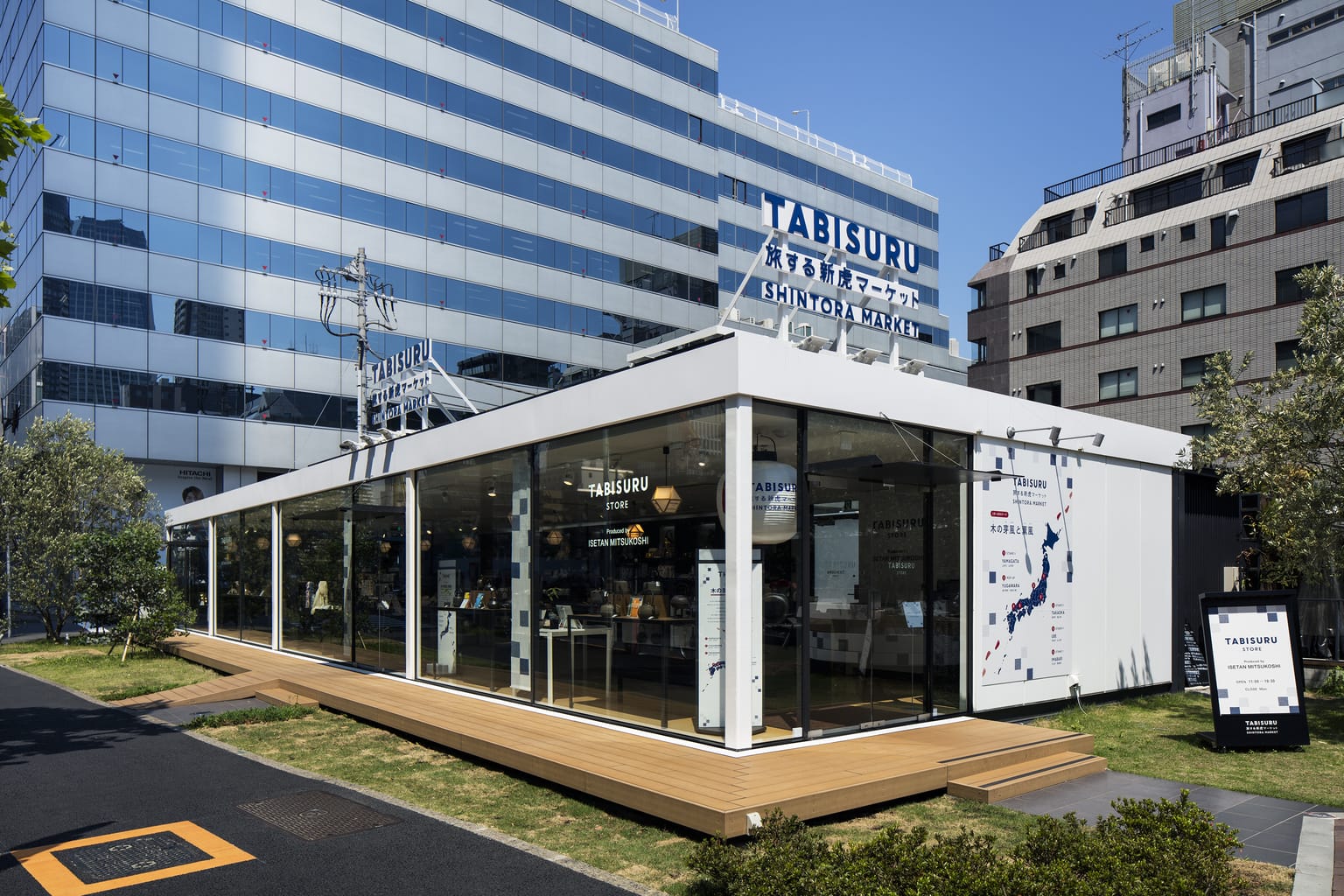As the seasons change, so do the stands at Tokyo’s Tabisuru Shintora Market, an ongoing event just outside Toranomon Hills that promotes local regions from across Japan. This time, inspired by the theme “Craftsmanship nurtured by nature and gentle breezes,” six regions showcase their specialties. Komono and Suzuka in Mie, Hioki in Kagoshima, and Awashimaura, Yahiko, and Izumozaki in Niigata will host the four stands. Each area is known for their abundance of natural resources and the crafts and foods that make the most of them. Here are our top recommendations of what to do at the market….
.jpg) Shop for Handmade Crafts
Shop for Handmade Crafts
From Japan’s southernmost main island to the icy winds of the west coast, the new tenants of the Tabisuru Shintora Market stands are a varied bunch:
Stand 1 is home to Komono, located in Mie Prefecture. It has been popular with travelers for over 1,300 years thanks to its onsen, clean water, clear air and great food. It is also home to Komono Banko ware, a type of pottery favored among tea ceremony practitioners for its elegant simplicity and light weight.
Stand 2 houses Hioki, a city on the west coast of Kagoshima, known as the birthplace of Satsuma pottery. Brought over from the Korean peninsula over 400 years ago, this craft is part of an industry known worldwide. Many craftsmen still use over 400-year-old kilns to fire their kama-style ceramics.
Stand 3 belongs to Suzuka city, which has a long history of craftsmanship. Suzuka Sumi ink sticks are made from pine tree soot and oils and were first produced in the Heian period (710-784). These ink sticks are sought after by calligraphy artists nationwide. Today, only two artisans have inherited this traditional craft. Suzuka is also known for its Ise Katagami Stencil paper, which has over 1,000 years of history behind it. The stencil is used to create designs for kimono dyeing. Planned patterns are painstakingly carved out of the paper, which requires the utmost skill and patience.

Sharing Stand 4 are Awashimaura, Yahiko, and Izumozaki – all of which are in Niigata Prefecture. Awashimaura is a green and lush island, rich in natural resources despite its small size. Yahiko is home to Yahiko Shrine, a centuries-old pilgrimage destination and home to ancient Echigo (old Niigata) culture. Japan’s largest chrysanthemum festival is held here every year in November. Izumozaki is as known for its fishing as it’s known for its waxed paper balloon making. The city boasts 100 years in the paper balloon business and is the number one paper balloon purveyor in Japan. Together, these three areas represent Niigata’s finest features of sea, mountains, and abundant greenery.
 Sip Rare Sake
Sip Rare Sake
As the evening breeze begins to cool, a sip of something stronger can help keep you warm. Find hard-to-get sake and shochu at the market stands from the various regions. Komono’s Hayakawa Shuzo gives visitors a choice of three different Tabika sake so they can taste the difference between sake types within the same company. As Hioki is in shochu country, offers bargain sips of imo (sweet potato) shochu instead of sake. Seikai no Kaori has a rich and sweet flavor, while Haraguchi Shuzo offers a round, rich mouthfeel with earthy tones. Both come at an affordable ¥300 a glass. Suzuka’s Zaku Ho no Tomo sake has received international recognition for its mellow and slightly sweet, but balanced flavor. Niigata touts its Koshi no Hakusetsu from Yahiko Shuzo, which is has a clear sharpness to it and is the brewery’s standard. For those interested in purchasing sake by the bottle, the Tabisuru Store has a wide range of sake for all tastes.
 Taste Regional, Seasonal Nabe
Taste Regional, Seasonal Nabe
Just as every season has its own charm, every region has its own take on autumnal delicacies. As temperatures cool, the hotpots come out and, here, each region uses its own distinctive ingredients and cooking methods. Komono’s souhei motsu nabe (literally priest soldier offal hot pot), contains a variety of local specialty meats and serves two to three people. Kagoshima prides itself on its black pork, chicken, and seafood – and Hinoki’s barley miso nabe makes the most of these, creating a bowl of umami deliciousness. Suzuka’s delightful take on shabu shabu features sakura pork and a delicious tea soup base (serves two to three people). For those wanting something a little bit heartier, the Niigata trio have come up with an omusubi lunchbox coupled with miso soup. Omusubi is another word for rice ball, but the verb musubu means to tie together or unite – which is what the dish does for these Niigata towns.
Wear Samurai Armor at the Pop-up Market
In mid-October, there will be a special two-day event featuring fresh vegetables, crafts, and workshops. Visitors can wear samurai armor from Kagoshima, try their hand at making their own Ise katagami stencil paper, and write with Suzuka Sumi ink. It will be a rare chance to buy crafts from each of the regions, as well as sample vegetables and local dishes. This is a unique chance to get a true, in-depth experience of these regions.
Oct 13, 3-8pm, Oct 14, 11am-5pm.
Tabisuru Shintora Market’s autumn edition is on from October 4 to December 27, 2017. For more info and contact details, go to our event listing.

Sponsored Post









